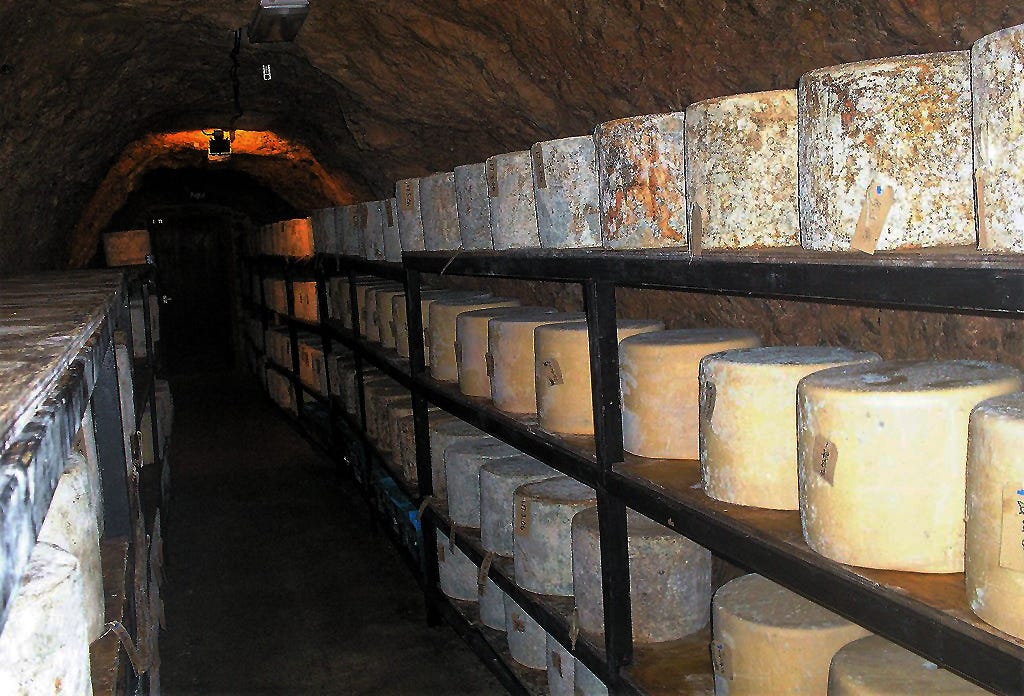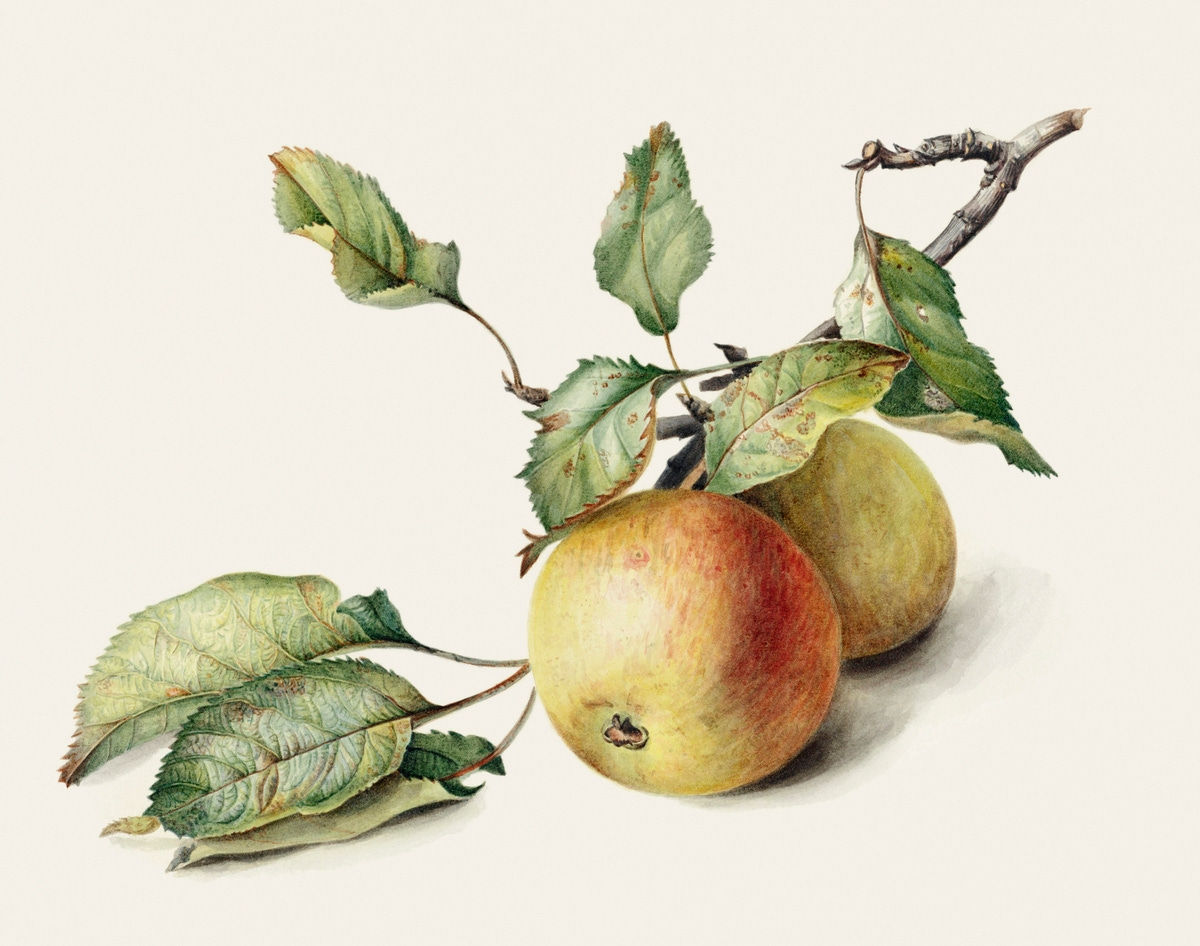The land of cheese and cider [WFJ #14]
Somerset's food culture is defined by what's under our feet and what's over our heads
This could be nothing but pure myth, but apparently cheddar production was originally only permitted within 30 miles of Wells cathedral.1
It’s plausible enough – when you think of Somerset, inevitably cheese is part of that short list of food embedded within the region.
But why is that? Coincidence? Because of a higher proportion of dairies in the area? Maybe the farmers sing to their cows as they tuck them in at night? Not quite – often, a food product gains its character and heritage from the climate and conditions in which the raw materials are produced. Whether that’s grain for your bread, grass for your beef, or hops for your beer.
Since Somerset’s better endowed with rich pastures than it is loamy, fertile soils, the region is generally better suited to grazing livestock than it is growing cereals or vegetables. This, paired with the caves under the Mendip Hills, which provide constant temperature and humidity and thus an ideal maturation environment for cheddar, established the region with a reputation for cheese.
In the wine world, the unique conditions under which a grape is cultivated has a name – terroir.2 Translated from French as ‘land’, terroir helps explain what makes, say, a merlot grown in Bordeaux soil taste unique to a merlot grown in Napa Valley soil.
This is also true of Somerset’s other famous food product. “You could have a variety of apple out of my orchard, go five miles out the road or ten miles out the road and have the same variety of apple and that will taste different,” Roger Wilkins tells Pellicle magazine. “Because the soil’s different, the climate’s different.”
Roger, now in his mid-70s, has made cider since he was five. These days, they call him the ‘cider king’, because the cider he produces at Lands End Farm in Mudgley, is constantly heralded as the UK’s very best. Something other traditional makers in Somerset – like Hecks, Rich’s, and Perry’s – may choose to contest.
Cidermaking became synonymous with Somerset after the Romans were looking for somewhere with the right soil and climate to grow their apples. Now, we have 156 varieties of cider apple – such as Black Vallis, Sheeps Nose, Yarlington Mill, Kingston Black, and Nailsea White – with a connection to the area. Between Taunton and Yeovil, there’s Burrow Hill Farm, whose cider bus famously appears at Glasto. Burrow Hill grow about 40 different varieties of cider apple, and their trees take 15 years longer to grow than those of normal commercial orchards, but need no pesticides or fertiliser to help them mature.
Since cider apple trees can take up to 100 years to produce their best harvests, establishing heritage is no overnight feat, and cultivating an orchard tends to be a legacy project. Mainstream cidermakers typically rely on apples grown quickly, and for yield rather than flavour, so simply can’t compete with traditional, artisanal producers.
But that’s not to say they haven’t tried. Under UK law, for a beverage to be called cider it must consist of at least 35% apple juice. Industrial cider manufacturers, like those brands teenagers drink in the park, exploit this fact, relying on concentrate, flavourings, sugar, and extra carbonation instead of – what should be obvious – a majority of apple juice.
Cheese has endured a similar fate, with industrial producers bound by the drudgery of consistency and homogeneity that the market demands, and mirroring few of the complexities shown off by small producers using the best quality milk they can find.
Arguably the most profound effect on British cheese however came during WWII rationing. In the spring of 1941, the British government effectively banned luxury and highly perishable cheeses like Stilton, as efforts focused on cheese that could be stored more conveniently and transported over longer distances.
Naturally, this favoured harder cheeses, and so became known ‘Government Cheddar’ and ‘Austerity Wensleydale’. The move ultimately made cheddar the popular cheese it is today, though it also consigned various heritage cheeses to extinction.
Both cheddar and cider are now somewhat formally recognised in the same breath as Somerset. ‘Somerset cider brandy’, that Burrow Hill distil from their cider, is under Protected Geographical Indication in the EU and UK,3 and ‘West Country Farmhouse Cheddar’ is under Protected Designation of Origin under the EU and UK law.4 This tells everyone these products are of local significance, and made under specific conditions. So imitators beware.5
Food and drink has such an important role in lending intrigue and a sense of place to a region. As such, the producers making it happen need to be recognised – otherwise we end up with a bland culture unique to nowhere. It might not be a tough ask, but drop into Just Ales on Stony Street for Wilkins’ cider and Somerset Cider Brandy, and stop by Somerset Deli on market days for Westcombe and Wookey Hole cheddar, and we can help local food culture on its way.6
Further reading
Meeting Cider Legend Roger Wilkins – Pellicle
This cool, but somewhat dated, Somerset cider map
A Cheesemonger’s History of the British Isles – Ned Palmer
An old BBC article mentions this, but no historical texts that I’ve found can corroborate http://news.bbc.co.uk/1/hi/business/5241544.stm
I count grass as animal feed here – Former Director of the Pasture-Fed Livestock Association Sara Gregson says, somewhat profoundly, that grass is the UK’s best crop
https://assets.publishing.service.gov.uk/media/5fd366f68fa8f54d5abcdfdb/pfn-somerset-cider-brandy-technical-file.pdf
https://assets.publishing.service.gov.uk/media/5fd3693f8fa8f54d59e8b750/pfn-west-country-farmhouse-cheddar.pdf
Graze cattle in orchards, as was once custom, and cider and cheese suddenly go hand in hand
Better still, Westcombe’s cheesemaker Tom Calver pops up with his own stall on Stony Street during every Frome Independent market




